
A Bright Future Ahead
Portable Spectral Services Announces Exciting Management Transition
We all love a cheeky bit of chocolate. No wonder, the botanical name for the cocoa tree is Theobroma cacao, which translates to “food of the gods.”
As simple as it is to enjoy, it is one of most complex chemical mixtures known (over 1500 flavour components identified!).[1]
Per capita for consumption, European’s take out the prize, with the 10 top countries all being from the continent. The Swiss win with 10.77 kg/head consumed in 2008. Looking at our own consumption, Australian’s spent nearly $100 per person in 2015 on chocolate.
The structure of chocolate can be defined as “a fat-continuous matric within which are particles of cocoa powder, sugar, and, in the case of milk chocolate, milk powder.” (Fig.1)
Cocoa butter is the one constant in regards of fats, regardless of the type of chocolate. The flavour comes from the cocoa powder (the non-fat part of cocoa) (Fig. 2).
Allegedly, the compounds in chocolate that have the most positive affects come from the cacao bean. This means the darker the chocolate, the more positive benefits you will be receiving (sorry white chocolate lovers, there are no cocoa solids, only cocoa butter). [3]
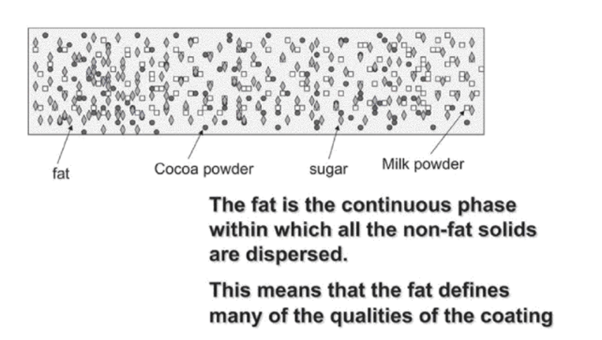
Figure 1: Schematic representation of the structure of chocolate. (Taken from: Talbot et. al., 2012)

Figure 2: The main chemical components of different types of chocolate. (Taken from: https://biobeat.nigms.nih.gov/2020/02/the-chemistry-of-chocolate/ )
A milk chocolate bar was analysed with a Bruker M4 TORNADO micro-XRF to determine if there was any elemental variation. The micro-XRF will detect the presence of elements from sodium (Na, Z=11) to uranium (U, Z=92) at a micro scale. The chocolate was analysed at resolution of 50 µm over a 2 x 2.5 cm area.
The resulting map spectrum showed the presence of silica (Si), phosphorus (P), sulphur (S), potassium (K), calcium (Ca), titanium (Ti) and iron (Fe) (Fig. 3). Phosphorus and potassium are well known to be present in chocolate, as 30g of dark chocolate made with 70-85% cocoa contains 87 mg of P and 203 mg of K4.

Figure 3: Maximum pixel spectrum of the mapped chocolate area.
For the most part, the detected elements showed a homogenous distribution throughout the chocolate. Two areas however showed an elevated abundance of Si and Fe that is not visually discernible by eye (Fig. 4). A black spot observed in the Fe element map shows the absence of any Fe due to an air bubble in the chocolate.
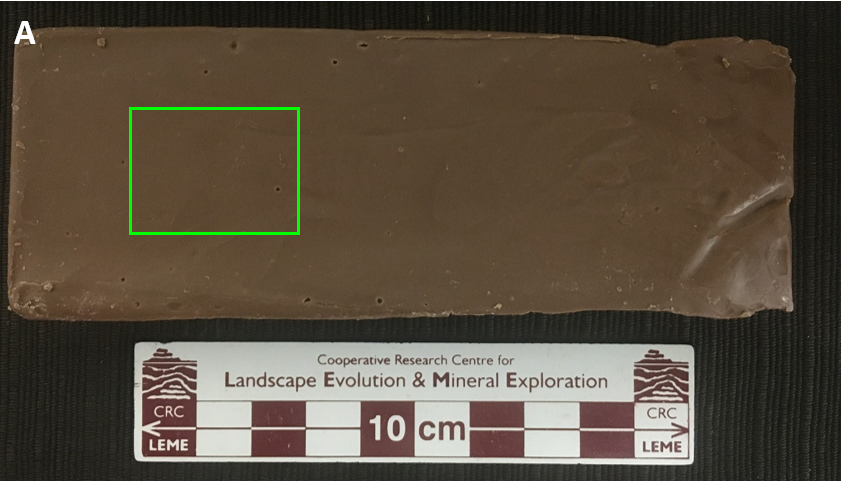
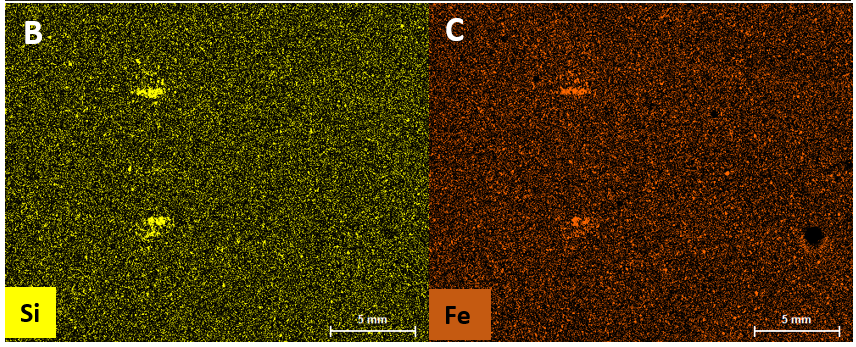
Figure 4: A) Mapped area of chocolate outlined in green. B) Si element distribution map. C) Fe element distribution map.
For more information on micro-XRF spectroscopy visit www.microxrf.com.au/.
Visit our YouTube channel, Professor Spectrum to watch live micro-XRF scans and instructional videos.
If you are interested in having your own sample analysed by micro-XRF, contact Portable Spectral Services p: 08 9321 2830 e: [email protected]
Product information on the Bruker M4 TORNADO micro-XRF.
[1] https://www.science.org.au/curious/everything-else/chocolate
[2] Talbot, Geoff. “Chocolate and Cocoa Butter-Structure and Composition.” In Cocoa Butter and Related Compounds, 2012. https://doi.org/10.1016/B978-0-9830791-2-5.50004-9.

Portable Spectral Services Announces Exciting Management Transition
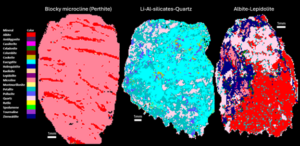
Our tool introduces uXRF (micro-X-ray fluorescence) scanning technology to RC chip analysis, enabling rapid, non-destructive, and quantitative analysis of major, minor, and trace mineral phases.

Automated micro-X-ray fluorescence (micro XRF) technology emerges as a powerful tool to rapidly and accurately capture the mineralogy of rock chip, RC and AC samples.

Findings of an ongoing regional evaluation study over concealed Proterozoic lithologies known to host magmatic nickel sulphides with potential to host other base-metal, gold and rare earth elements (“REE”) systems within the Fraser Range, Western Australia.
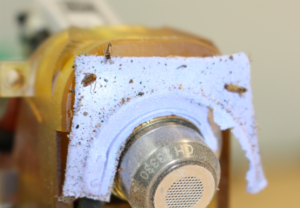
Findings of an ongoing regional evaluation study over concealed Proterozoic lithologies known to host magmatic nickel sulphides with potential to host other base-metal, gold and rare earth elements (“REE”) systems within the Fraser Range, Western Australia.
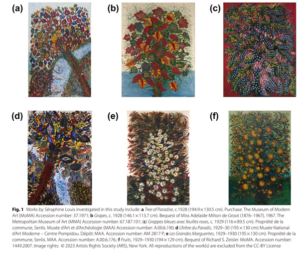
Findings of an ongoing regional evaluation study over concealed Proterozoic lithologies known to host magmatic nickel sulphides with potential to host other base-metal, gold and rare earth elements (“REE”) systems within the Fraser Range, Western Australia.